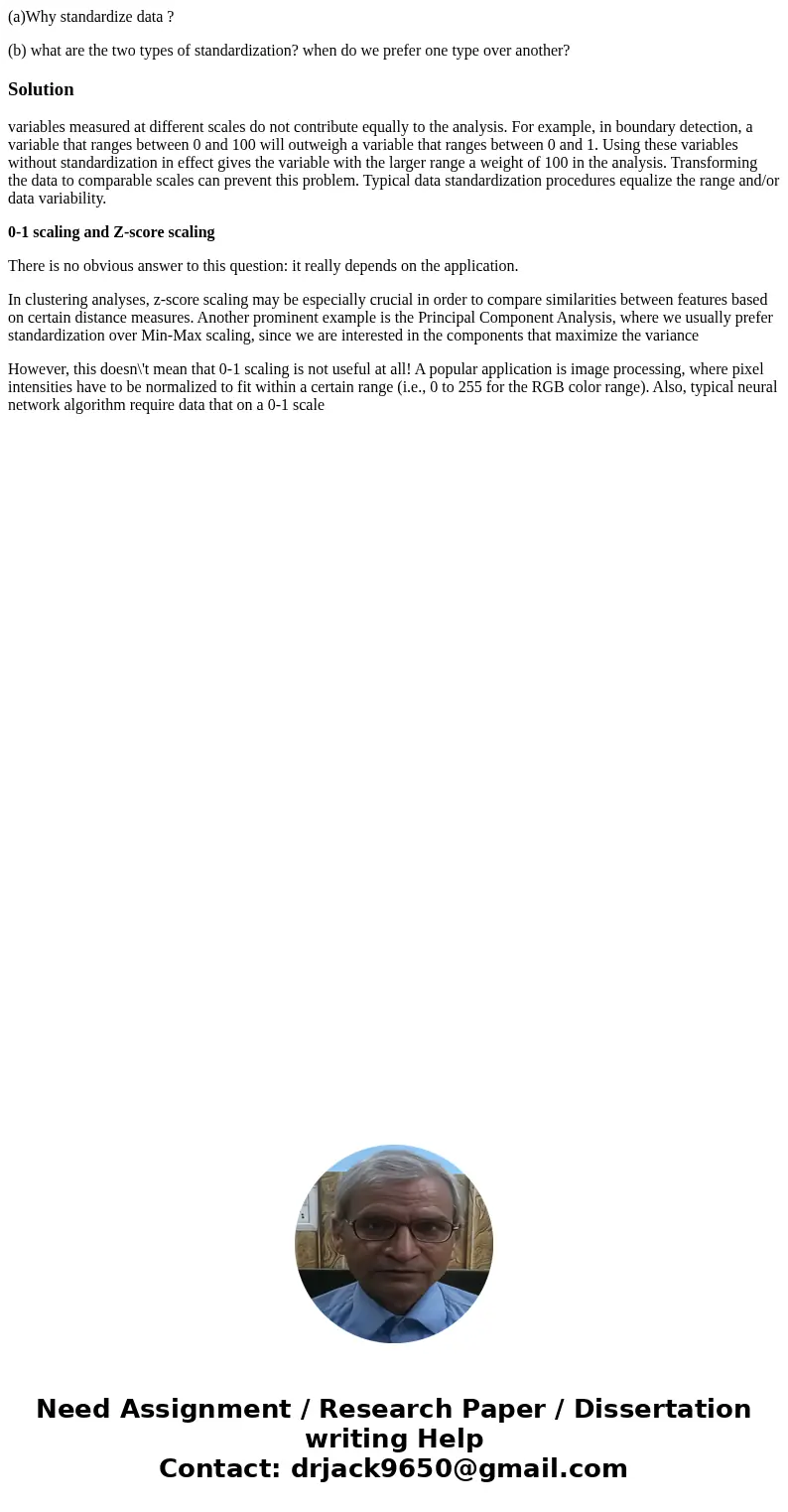aWhy standardize data b what are the two types of standardi
(a)Why standardize data ?
(b) what are the two types of standardization? when do we prefer one type over another?
Solution
variables measured at different scales do not contribute equally to the analysis. For example, in boundary detection, a variable that ranges between 0 and 100 will outweigh a variable that ranges between 0 and 1. Using these variables without standardization in effect gives the variable with the larger range a weight of 100 in the analysis. Transforming the data to comparable scales can prevent this problem. Typical data standardization procedures equalize the range and/or data variability.
0-1 scaling and Z-score scaling
There is no obvious answer to this question: it really depends on the application.
In clustering analyses, z-score scaling may be especially crucial in order to compare similarities between features based on certain distance measures. Another prominent example is the Principal Component Analysis, where we usually prefer standardization over Min-Max scaling, since we are interested in the components that maximize the variance
However, this doesn\'t mean that 0-1 scaling is not useful at all! A popular application is image processing, where pixel intensities have to be normalized to fit within a certain range (i.e., 0 to 255 for the RGB color range). Also, typical neural network algorithm require data that on a 0-1 scale

 Homework Sourse
Homework Sourse